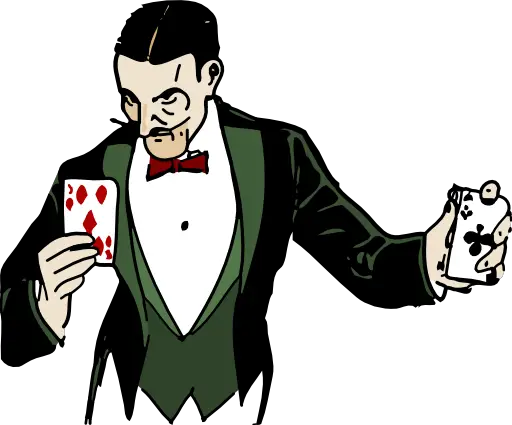Support our educational content for free when you purchase through links on our site. Learn more
Is Mentalism Real? Unmasking the Mind Readers: 10 Secrets Revealed [2024] 🤯
Ever watched a mentalist on stage, seemingly reading minds and predicting the future, and wondered, “Is this real?” 🤔 We’ve all been captivated by the allure of mentalism, the tantalizing possibility that someone can delve into the depths of our thoughts. But beneath the smoke and mirrors, lies a world of psychology, observation, and masterful illusion. In this article, we’ll peel back the curtain on the secrets of mentalism, exploring the techniques they use, the ethical considerations involved, and ultimately, whether it’s truly possible to read someone’s mind. Imagine this: a mentalist asks a volunteer to choose a card from a deck, then confidently reveals their selection. Is it a genuine psychic ability, or a carefully crafted illusion? Get ready to have your mind blown as we delve into the world of mentalism and uncover the truth behind the mind-bending tricks.
Quick Answer
- Mentalists don’t actually read minds. Their “powers” stem from a combination of psychological techniques, observation skills, and masterful illusions.
- They exploit cognitive biases, such as confirmation bias and the availability heuristic, to create the illusion of genuine insight.
- Mentalism is an art form that requires dedicated practice, understanding of psychology, and a flair for the dramatic.
- Ethical mentalists are transparent about their methods, emphasizing that their craft is rooted in skill and showmanship, not supernatural powers.
👉 CHECK PRICE on: Mentalism Books | Mentalism Tricks | Mentalism Supplies
Table of Contents
- Quick Tips and Facts
- The History of Mentalism: A Journey Through the Mind
- Unveiling the Secrets: How Mentalists “Read Minds”
- Can Magicians Read Minds? The Truth About Mentalism
- What is a Mentalist? Demystifying the Art of Mind Reading
- Who are the Best Mentalists in the World? A Look at the Masters of Mind
- Unveiling the Secrets: The Best Mentalist Tricks Revealed
- The Psychology Behind Mentalism: How It Works
- Learning the Art of Mentalism: A Guide for Beginners
- The Ethics of Mentalism: Balancing Entertainment and Deception
- Is Mentalism a Real Thing? The Final Verdict
- Conclusion
- Recommended Links
- FAQ
- Reference Links
Quick Tips and Facts
- Mentalism, like any good magic trick, thrives on the element of surprise. 🤯 Want to leave your audience speechless? Focus on mastering a few high-impact illusions rather than overwhelming them with quantity.
- Confidence is your greatest asset! 😎 Even if you’re internally freaking out, project an aura of calm and control. Remember, you’re the maestro of the mind, guiding your audience through a carefully choreographed experience.
- The real magic lies in the details. ✨ Pay close attention to your audience’s reactions, their subtle cues, and tailor your performance accordingly. It’s this ability to adapt that elevates a good mentalist to a great one.
The History of Mentalism: A Journey Through the Mind
The roots of mentalism are tangled and ancient, entwined with the very history of deception and wonder. From ancient oracles whispering cryptic prophecies to the cunning conjurers of the Middle Ages, the desire to appear in control of the unseen has always captivated humanity.
Ancient Deception and Early Mentalism
Imagine a world lit by flickering candlelight, where whispers of magic held the same weight as scientific observation. This was the world in which early forms of mentalism flourished. Think back to the Oracle of Delphi, her pronouncements shaping the destiny of empires. While some might dismiss it as mere trickery, the power she wielded lay in understanding the human psyche, exploiting our innate desire for meaning and guidance.
👉 CHECK PRICE on: Oracle Cards | Tarot Cards
The Rise of Stage Mentalism and Public Fascination
Fast forward to the 19th century, a time of burgeoning scientific curiosity and a fascination with the paranormal. This era saw figures like P.T. Barnum captivating audiences, not just with physical oddities, but with demonstrations of what appeared to be genuine psychic abilities. This marked the birth of mentalism as a form of entertainment, a spectacle that left audiences both amazed and bewildered.
The Golden Age of Mentalism
The early 20th century ushered in what many consider the Golden Age of Mentalism. This period saw the rise of legendary figures like Harry Houdini, who, while renowned for his daring escapes, was also a fierce exposer of fraudulent psychics. Houdini’s legacy, however, extended beyond debunking; he inadvertently fueled the public’s fascination with mentalism, pushing performers to refine their craft and further blur the lines between trickery and the seemingly impossible.
Want to delve deeper into the captivating history of magic and illusion? Check out our articles on Magic Psychology.
Unveiling the Secrets: How Mentalists “Read Minds” 🤫
Let’s get one thing straight – true telepathy remains firmly in the realm of science fiction. Mentalists, as skilled as they may be, aren’t actually privy to your innermost thoughts. Their power lies in understanding the intricacies of human behavior, employing a potent blend of psychology, suggestion, and good old-fashioned trickery to create the illusion of mind reading.
Interested in how mentalism plays with your perceptions? Our article “Is Mentalism Real? Unmasking the Mind Readers: 10 Secrets Revealed 2024 🤯” at https://mindtrick.com/is-mentalism-real/ provides a fascinating deep dive into the topic.
The Art of Observation: More Than Meets the Eye
Ever notice how a seasoned bartender can read a room, sensing who’s itching for a fight and who’s about to spill their heart out? Mentalists operate on a similar wavelength. They’re masters of observation, picking up on the subtlest of cues – a fleeting microexpression, a nervous twitch, the way you unconsciously adjust your posture – all tell a story if you know what to look for.
The Power of Suggestion: Planting Seeds of Thought
Here’s a little secret: our brains are wired to find patterns and seek meaning, even where none exists. Mentalists exploit this through subtle suggestion. By carefully phrasing questions or statements, they can subtly influence your choices, making you believe they’ve predicted your actions when, in reality, they’ve gently nudged you towards that outcome all along.
Misdirection and Sleight of Hand: The Magician’s Toolkit
Just like their illusionist counterparts, mentalists often employ misdirection and sleight of hand, not necessarily to make objects vanish, but to manipulate information. This could involve anything from a cleverly concealed peek at a written word to subtly guiding your attention away while they pull off a crucial move.
Want to learn some mind-bending sleight of hand techniques yourself? Check out our resources on Card Tricks, Levitation, and Coin and Money Tricks.
Can Magicians Read Minds? The Truth About Mentalism 🤔
The short answer? No, magicians can’t actually read minds in the literal sense. There’s no mystical third eye scanning your thoughts like files in a cabinet. The real magic lies in their mastery of observation, psychology, suggestion, and illusion, all working in perfect harmony to create an experience that feels utterly real.
The Psychology of Belief: Why We Want to Be Fooled
Think about a time you watched a truly great magic show – the impossible feats, the gasps of astonishment from the crowd. Part of the allure, beyond the technical brilliance, is the willing suspension of disbelief, that childlike wonder of “How did they DO that?” We crave mystery, a break from the mundane, and mentalism offers that escape, even if it means momentarily suspending logic and embracing the impossible.
The Ethical Tightrope: Entertainment vs. Deception
This is where things get a little ethically murky. While most mentalists are upfront about their craft being rooted in illusion, there are those who blur the lines, presenting their abilities as genuine psychic phenomena. This is where the line between entertainment and exploitation can become dangerously thin.
As ethical practitioners at Mind Trick™, we firmly believe in transparency. Mentalism, when done right, is an art form, a celebration of human ingenuity and our capacity for wonder. It should never be used to deceive or manipulate for personal gain.
What is a Mentalist? Demystifying the Art of Mind Reading 🧠
A mentalist is like a psychological detective, a master of observation and deduction, but with an added dash of showmanship. They’re experts at reading people, deciphering the subtlest of cues to create the illusion that they can peer directly into your thoughts.
More Than Just Tricks: The Skills of a Master Mentalist
- Exceptional Observation Skills: A mentalist is a keen observer of human behavior, noticing the tiniest details – a shift in posture, a fleeting microexpression – that most people miss.
- Mastery of Psychology: They understand the inner workings of the human mind, using principles of psychology, persuasion, and suggestion to influence your thoughts and actions without you even realizing it.
- A Flair for the Dramatic: Let’s face it; a monotone presentation won’t exactly leave your audience spellbound. Mentalists are natural storytellers, weaving tales of mystery and intrigue that keep you on the edge of your seat.
Mentalism vs. Magic: Two Sides of the Same Coin?
While often grouped together, mentalism and magic have distinct flavors.
- Magic: Relies heavily on physical props and sleight of hand to create illusions. Think disappearing acts, levitation, or transforming a dove into a bouquet of flowers. It’s a spectacle that primarily engages your visual senses.
- Mentalism: Focuses on the mind, using psychological techniques, suggestion, and misdirection to create the illusion of mind reading, thought influencing, or precognition. It’s a more intimate form of entertainment that plays with your perceptions and beliefs.
Who are the Best Mentalists in the World? A Look at the Masters of Mind 🏆
The world of mentalism is brimming with talented individuals who’ve dedicated their lives to honing their craft. Here are just a few of the modern masters who’ve captivated audiences worldwide:
-
Derren Brown: This British mentalist is a household name, renowned for his captivating stage shows and television specials that blend mind-blowing illusions with thought-provoking commentary on psychology and the nature of belief.
-
👉 CHECK PRICE on: Derren Brown
-
David Blaine: Known for his high-stakes endurance stunts and street magic that blurs the lines between reality and illusion, Blaine’s performances often leave audiences questioning what’s humanly possible.
-
👉 CHECK PRICE on: David Blaine
-
The Amazing Kreskin: A true veteran of the craft, Kreskin rose to fame in the 1970s and continues to mystify audiences with his apparent ability to read minds and predict future events.
-
👉 CHECK PRICE on: The Amazing Kreskin
-
Lior Suchard: This Israeli mentalist has taken the world by storm with his impressive displays of mind control, influencing the choices of celebrities and even predicting global events.
-
👉 CHECK PRICE on: Lior Suchard
These are just a few of the many talented mentalists captivating audiences today. Their performances serve as a testament to the power of the human mind, not necessarily to read thoughts, but to understand, manipulate, and ultimately, to amaze.
Unveiling the Secrets: The Best Mentalist Tricks Revealed ????
Every magic trick, no matter how baffling, has a secret. But don’t worry, we’re not about to spoil the fun entirely! Instead, we’ll peel back the curtain just enough to give you a glimpse into the methods behind the madness.
1. Predicting the Future: It’s All in the Prep Work
Remember that time a mentalist seemingly predicted a random event chosen by an audience member? No crystal ball involved, just meticulous planning. Many mentalist routines rely on pre-show work, subtly gathering information about audience members beforehand to weave into their act. This could involve anything from scanning social media profiles to planting subtle cues in the environment.
2. The Power of Suggestion: You Choose, But Do You Really?
Ever wonder how a mentalist can “force” you to pick a specific card or object? It’s not magic; it’s psychology. Mentalists are masters of language and non-verbal cues, subtly guiding your choices without you even realizing it. They might emphasize certain words, use specific hand gestures, or control the pace of their speech to subtly steer you towards the desired outcome.
3. Body Language: The Telltale Signs
We all have tells, those unconscious movements or expressions that betray our true thoughts and feelings. Mentalists are like human lie detectors, trained to pick up on these subtle cues. A slight hesitation, a change in breathing, the way you unconsciously touch your face – these all provide valuable insights that a skilled mentalist can use to their advantage.
4. The Art of Cold Reading: Vague Statements, Specific Impact
Cold reading is a staple of mentalism, using broad, generalized statements that could apply to almost anyone to create the illusion of knowing intimate details about a person’s life. The key lies in delivery and observation. A skilled cold reader will carefully observe your reactions, adjusting their statements based on your responses to create the impression of a genuine connection.
Ready to try your hand at some mind-bending tricks? Our Kids Magic section is a great place to start, with easy-to-learn illusions that are perfect for budding magicians of all ages.
The Psychology Behind Mentalism: How It Works 🧠
Mentalism isn’t just about clever tricks; it’s a deep dive into the fascinating world of human perception and cognition. Mentalists leverage our brain’s natural tendencies to find patterns, seek meaning, and fill in the gaps to create illusions that feel real.
Cognitive Biases: Our Brain’s Shortcuts
Our brains are constantly bombarded with information, so to process it all efficiently, it takes shortcuts, relying on cognitive biases to make quick judgments. Mentalists exploit these biases to their advantage. For example:
- Confirmation Bias: We tend to favor information that confirms our existing beliefs, even if it’s not entirely accurate. A mentalist might use this bias by making vague statements that resonate with your pre-existing notions, leading you to believe they have special insight.
- Availability Heuristic: We judge the likelihood of an event based on how easily examples come to mind. If a mentalist emphasizes a particular outcome, making it seem more memorable, we’re more likely to believe it was the intended result.
The Power of Belief: Suspending Disbelief
Mentalism, like any form of magic, thrives on our willingness to suspend disbelief. When we enter a theater or watch a magic show, we’re primed for the extraordinary. This creates a cognitive state where we’re more open to suggestion and less likely to critically analyze the mechanics of the illusion.
Learning the Art of Mentalism: A Guide for Beginners 📚
Intrigued by the world of mentalism and want to try your hand at bending minds? Here’s a roadmap to get you started:
1. Start with the Basics: Observation and Psychology
Before you can wow audiences with mind-blowing illusions, you need a solid foundation.
- Hone Your Observation Skills: Pay close attention to the people around you. Notice their body language, their microexpressions, their habits. The more attuned you are to these subtle cues, the better you’ll be at reading people.
- Dive into Psychology: Understanding the workings of the human mind is crucial for a mentalist. Read books, take courses, or explore online resources to learn about cognitive biases, persuasion techniques, and the psychology of belief.
2. Master the Classics: Essential Mentalism Techniques
- Cold Reading: Practice crafting vague statements that could apply to almost anyone. Pay close attention to reactions, adjusting your approach based on the feedback you receive.
- Card Tricks with a Mental Twist: Card magic provides a great foundation for mentalism. Learn classic card forces, peeks, and controls, then adapt them to create the illusion of mind reading.
- Suggestion and Hypnosis: While stage hypnosis requires specialized training, learning basic suggestive techniques can enhance your mentalism routines.
3. Find Your Style: Develop Your Persona
Just like any performer, a mentalist needs a unique persona that sets them apart.
4. Practice Makes Perfect: Seek Feedback and Refine Your Craft
Like any skill, mentalism takes practice. Start by performing for friends and family, gradually working your way up to larger audiences. Seek feedback, be open to criticism, and constantly refine your techniques.
The Ethics of Mentalism: Balancing Entertainment and Deception ⚖️
Mentalism occupies a fascinating ethical gray area. On the one hand, it’s a form of entertainment, a playful dance of illusion and wonder. On the other hand, it involves deception, exploiting our vulnerabilities and cognitive biases to create the illusion of genuine psychic abilities.
Transparency is Key: Setting Expectations
Ethical mentalists are upfront about the nature of their craft. They make it clear that their abilities are rooted in skill and showmanship, not supernatural powers. This transparency is crucial for maintaining trust with the audience and ensuring that everyone understands they’re participating in a consensual form of entertainment.
Avoiding Exploitation: Respecting Boundaries
Mentalism should never be used to exploit, manipulate, or harm others. Avoid routines that prey on people’s vulnerabilities, such as claiming to communicate with deceased loved ones or offering false hope in desperate situations.
Using Mentalism for Good: Positive Applications
While often associated with entertainment, mentalism can also be used for positive purposes. Therapists and counselors might incorporate elements of suggestion or NLP (Neuro-Linguistic Programming) to help patients overcome negative thought patterns or achieve personal goals.
Conclusion
So, is mentalism a real thing? The answer, like most things in life, is complex. While mentalists can’t actually read minds, their mastery of psychology, observation, and illusion creates the illusion of mind-reading, leaving audiences breathless with wonder and questioning the very nature of reality.
Mentalism, when practiced ethically, is a captivating form of entertainment that celebrates the ingenuity of the human mind. It’s a reminder that the most powerful illusions aren’t always about making things disappear; they’re about playing with our perceptions, challenging our beliefs, and reminding us that the world is full of mysteries waiting to be unraveled.
Recommended Links
👉 Shop Derren Brown on: Amazon | Walmart | Derren Brown Official Website
👉 Shop David Blaine on: Amazon | Walmart | David Blaine Official Website
👉 Shop The Amazing Kreskin on: Amazon | Walmart | The Amazing Kreskin Official Website
👉 Shop Lior Suchard on: Amazon | Walmart | Lior Suchard Official Website
👉 CHECK PRICE on: Tricks of the Mind | 13 Steps to Mentalism | Mindfreak: Secret Revelations | Practical Mental Magic | The Artful Mentalism of Bob Cassidy | Maximum Entertainment | Reading Minds and Telling Fortunes
FAQ
How does a mentalist read minds?
Mentalists don’t actually read minds. They use a variety of techniques to create the illusion of mind reading.
What techniques do mentalists use?
- Observation: They pay close attention to body language, microexpressions,
Read more about “Is Mentalism Real? Unmasking the Mind Readers: 10 Secrets Revealed … 🤯”






